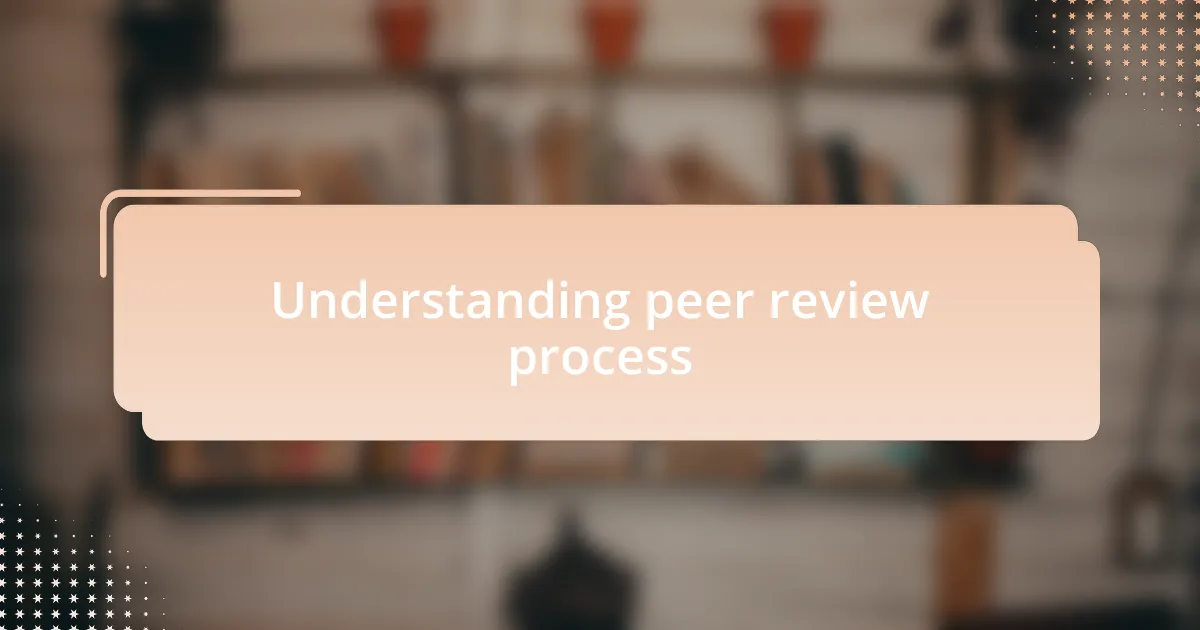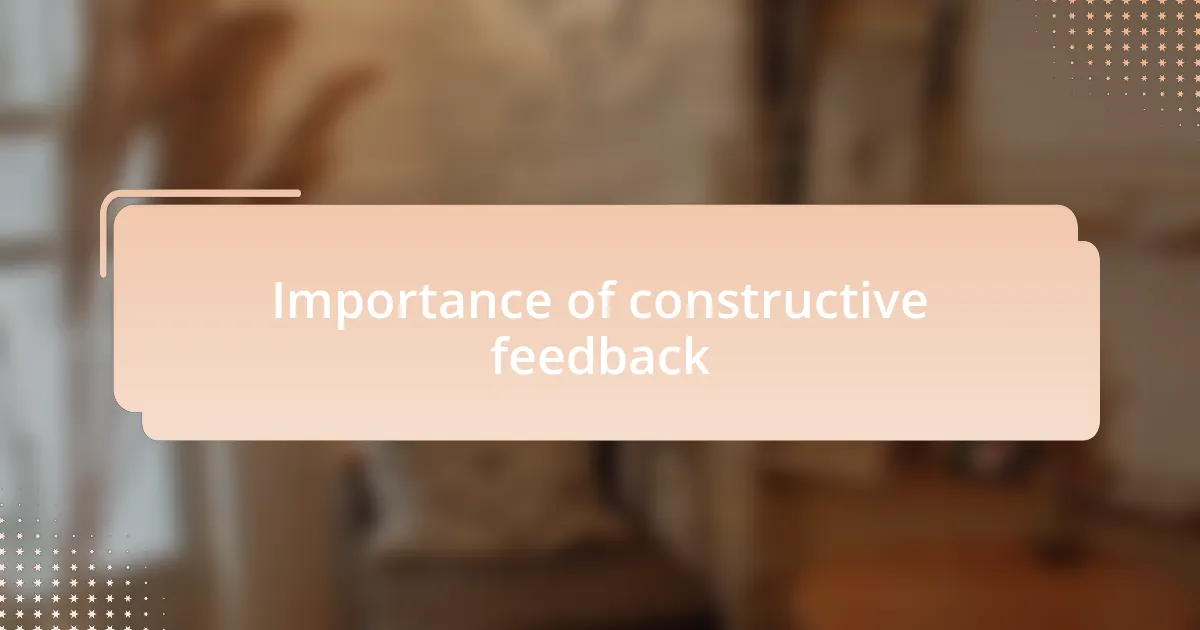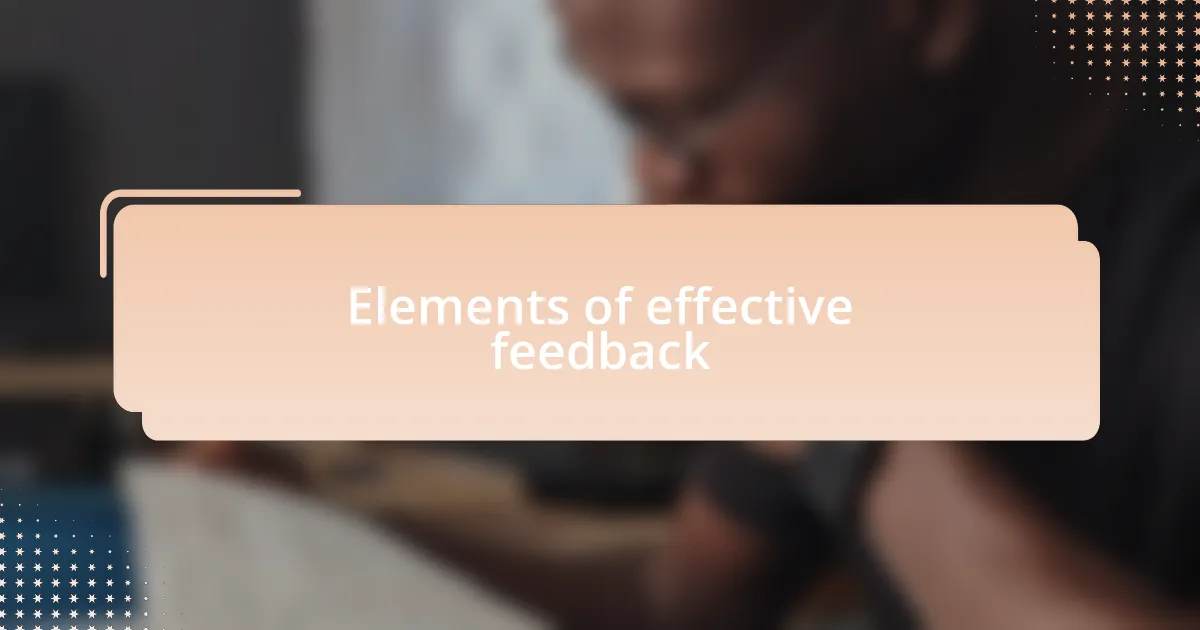Key takeaways:
- The peer review process is vital for ensuring research quality and often involves multiple revisions based on expert feedback.
- Constructive feedback balances criticism with recognition of strengths, fostering a collaborative improvement environment.
- Effective feedback should be specific, actionable, and communicated respectfully, using clear language and relevant examples to enhance understanding.

Understanding peer review process
The peer review process is a cornerstone of academic publishing, acting as a quality control mechanism that ensures research meets the necessary standards before being shared with the broader community. When I first submitted my own work for peer review, I felt a mix of excitement and anxiety—would my ideas be appreciated or criticized? This uncertainty is common in our field, as we invest so much intellectual energy into our writing.
During peer review, experts in the field assess the manuscript for originality, method, and overall contribution. I distinctly remember receiving feedback from reviewers who pointed out aspects I had overlooked; their insights were crucial in enhancing the clarity and impact of my arguments. Have you ever had your assumptions challenged by a peer’s perspective? It’s often uncomfortable yet invaluable.
Understanding the peer review process also means recognizing that it can take time. Manuscripts might go through multiple rounds of revisions driven by constructive comments. I’ve experienced the euphoria of acceptance but also the frustration of extended review periods. It’s essential to stay patient; every piece of feedback is a stepping stone to refining your work.

Importance of constructive feedback
Constructive feedback is crucial because it not only highlights areas for improvement but also validates the strengths of a manuscript. I still remember a time when a reviewer pointed out the strengths of my theoretical framework in a paper while also suggesting how I could tighten my arguments. That balance made the revision process feel less daunting and more like a collaborative effort toward excellence.
Receiving constructive feedback can feel like unlocking a new level of understanding in your work. When I first encountered a colleague’s insights that contradicted my findings, it was challenging. Yet, this experience ultimately led me to refine my thesis and produced a far more compelling narrative. Isn’t it interesting how a different perspective can ignite new ideas?
Moreover, constructive feedback fosters a culture of growth and continuous learning within the academic community. I’ve noticed that when I provide thoughtful critiques, my colleagues often reciprocate, and this dynamic enriches our collective knowledge. Have you experienced that rewarding feeling of mutual improvement that arises from effective peer feedback? It’s one of the most satisfying aspects of being in academia.

Elements of effective feedback
Effective feedback should be specific and actionable, providing clear guidance on what a writer can improve. I recall a time when a reviewer took the time to point out exactly which arguments were weak and suggested relevant literature to bolster my case. It made me feel that the reviewer was invested in my success, rather than just critiquing for the sake of it.
Additionally, it’s essential for feedback to be balanced. While highlighting weaknesses is important, acknowledging the strengths of a manuscript fosters a positive experience. I’ve learned to appreciate comments that recognize my unique contributions, as they motivate me to keep refining my work.
It’s also crucial that feedback is respectful and encouraging. I remember receiving a harsh critique that left me discouraged. However, constructive feedback presented kindly can spark a desire for improvement rather than fear of failure. So, how do we ensure our feedback fosters a supportive environment? I believe it starts with empathy—putting ourselves in the writer’s shoes can make all the difference in how our comments are perceived.

Tips for writing clear comments
When writing comments, clarity is key. I recall a situation where I received feedback that was vague and left me scratching my head. It was frustrating because I genuinely wanted to understand what needed improvement, but the reviewer never specified their concerns. Asking yourself, “If I were the writer, would I understand this comment?” can be a great litmus test for clear communication.
Using examples can significantly enhance clarity. I remember a reviewer pointing to specific sections in my paper and providing illustrations of how I could rephrase or reframe my arguments. This not only made it easier for me to grasp their suggestions but also sparked new ideas on how to enhance my writing. It’s a simple tactic but one that can bridge the gap between critique and comprehension.
Don’t underestimate the power of straightforward language. Academic jargon can sometimes cloud essential points. I’ve learned that using simple, direct statements not only improves understanding but encourages an open dialogue. Questions like “What does this really mean?” can help you cut through unnecessary complexity and ensure your comments are accessible to any reader.